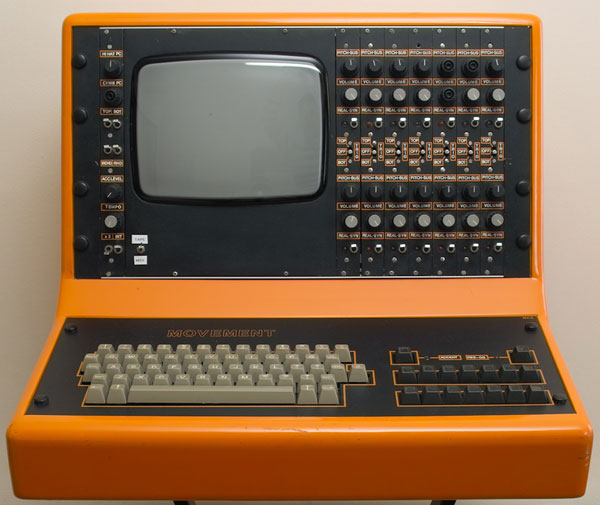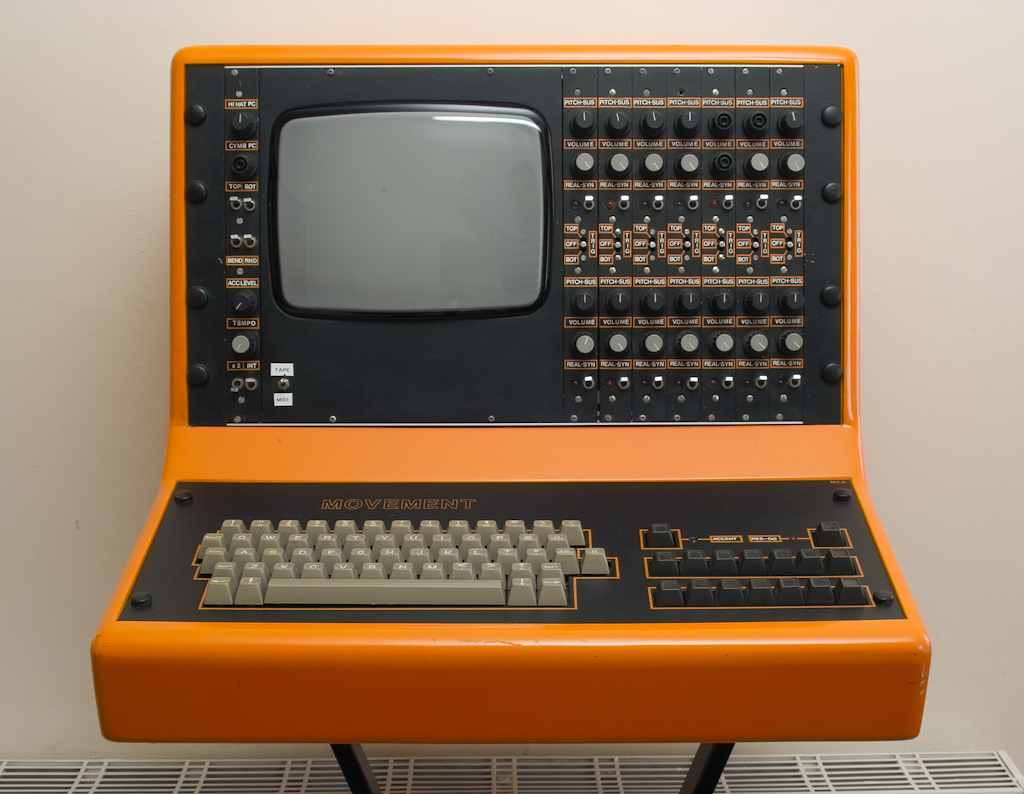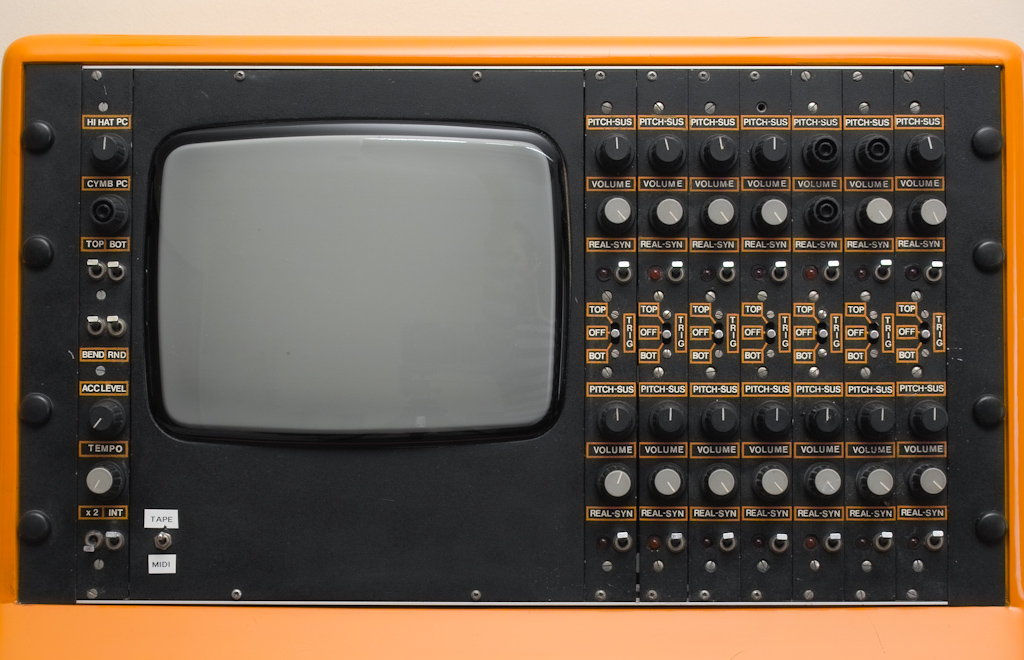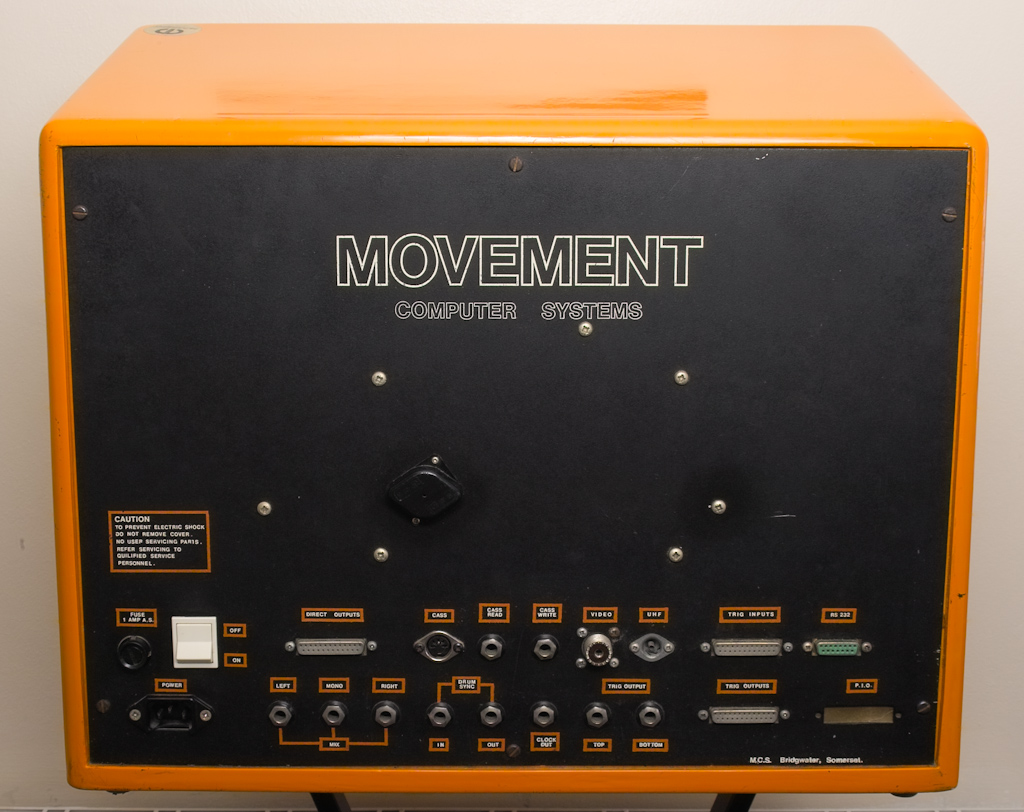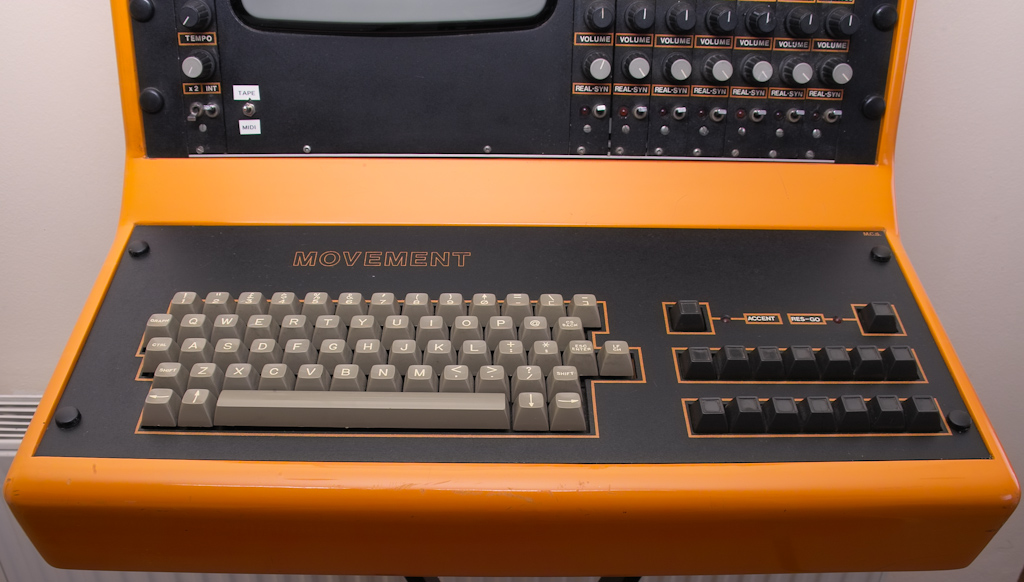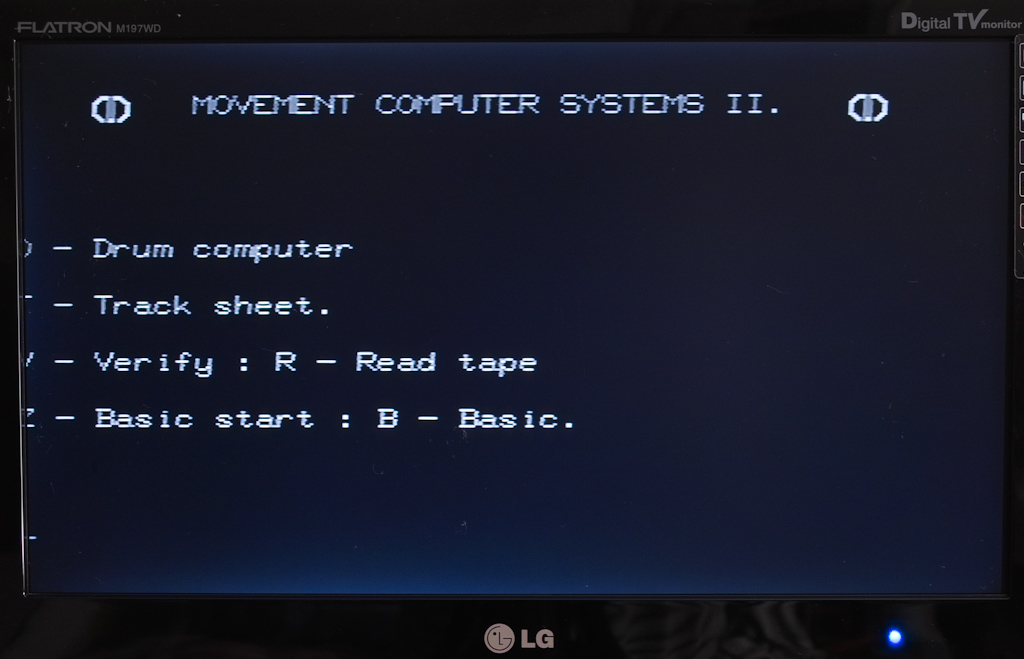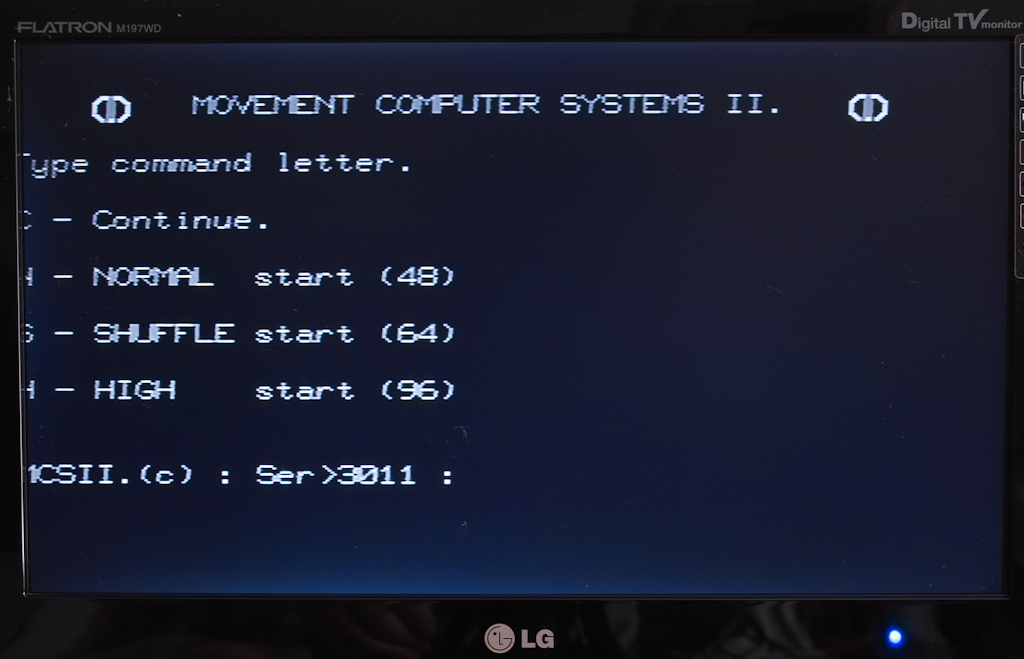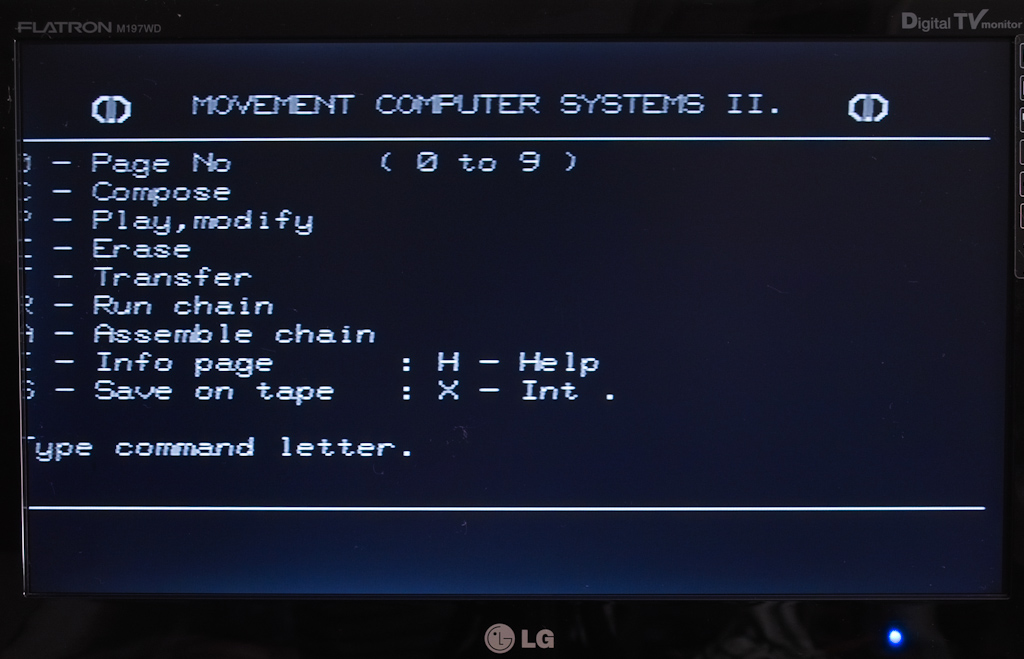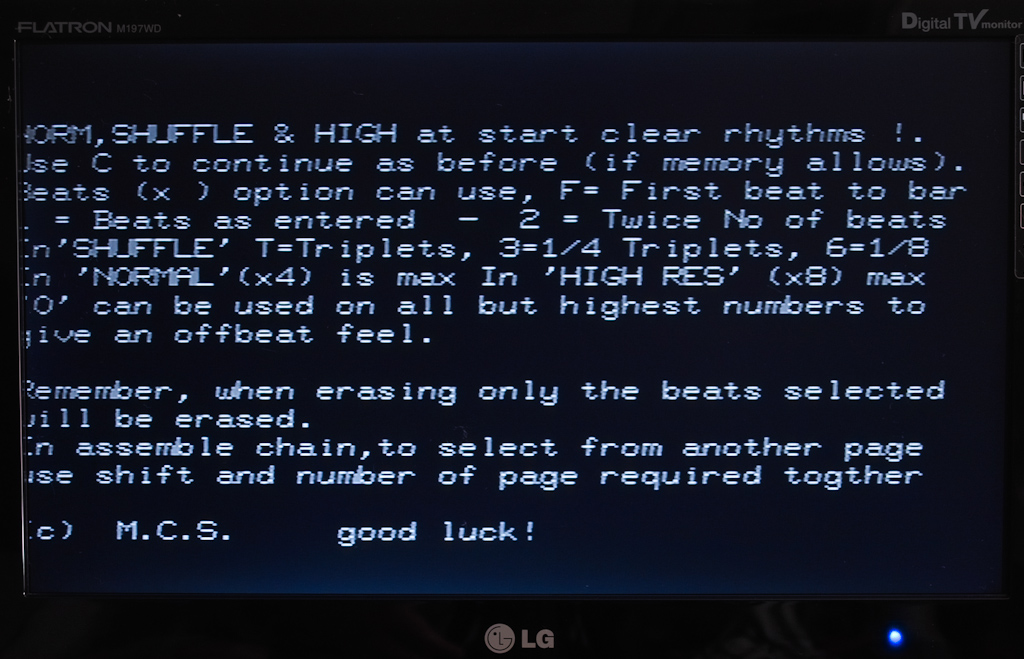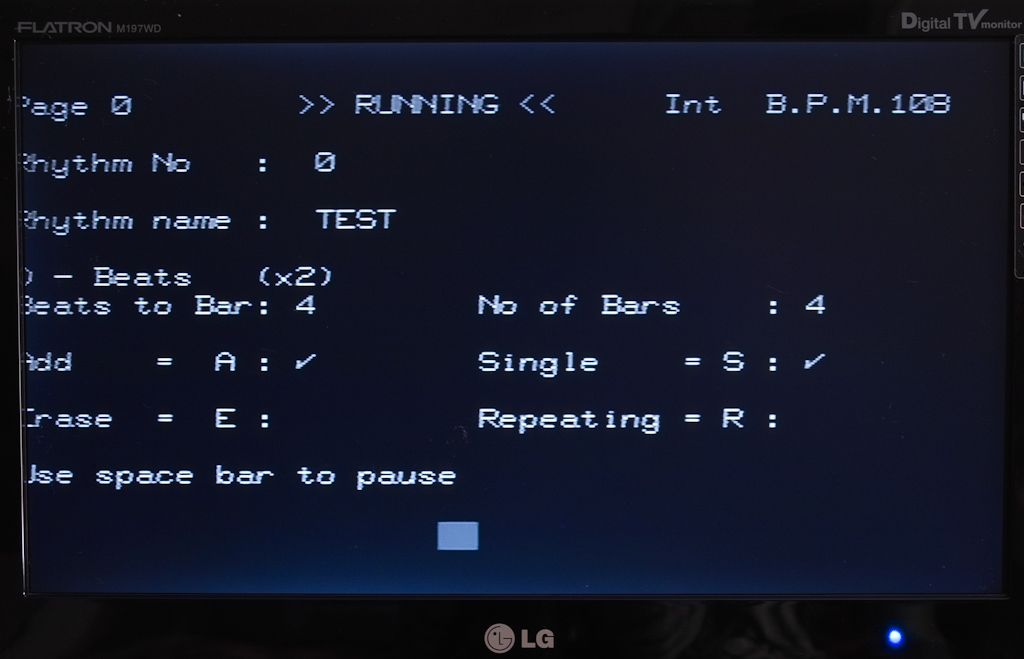Filter on ALL, SYNTH, DRUM, SAMPLER or MISC |
Total list currently 2405 items in 330 Brands |
MCS | Drum Computer MK2 |
Description | The Drum Computer (or Percussion Computer) from Movement Computer Systems is a very rare British made drum machine circa 1981. It is estimated that only 30 or so units were produced. It combines analog synthesized drum sounds (Simmons style) and digital 8-bit sampled drum sounds (LinnDrum style). There are seven voice cards, each with two drum voices, for a total of 14 drum voices. Each drum voice can be switched between either the analog (syn) or digital (real) mode and has its own Volume and Pitch-Sustain control knobs. Its most obvious and unique feature is the computer-like interface. It is used to facilitate graphic editing of the sequencing of drum patterns, with data displayed on a monochrome CRT display (video can be output to an external monitor via connections on the rear). Sequenced patterns can be chained together into Songs. It does not offer graphic drum sample editing or synthesis. New drum sounds can not be sampled in to it either as it does not appear to have audio inputs. It does, however, have extensive outputs including stereo out, individual outputs for each voice, individual Trigger inputs and outputs for each voice, Drum sync in and out, clock output, and cassette in and out for saving data to tape. Two models are known to exist: the MK1 which may have been a two-piece unit in which the monitor was separate from the rest of the machine, and the MK2 (released in 1983) which integrated the CRT monitor and had an orange (or black) case. In 1984, the MIDI specification was added to the MK2, along with an additional 8-track sequencer, battery backed memory and a floppy disk drive. Its most prominent user was David Stewart of the Eurythmics on tracks such as "Sweet Dreams". However, it never sounded as good as the competition surrounding it from Linn, Simmons and Oberheim and the product never really took off. |
| Brand | MCS |
| Model | Drum Computer MK2 |
| Device | Drum |
| Type | Desktop |
| Engine Type | Hybrid |
| Engine | VCO, Sample |
| Voices (max) | 14 |
| Oscillators | 1 |
| Engine Detailed | 1 per voice analog style or 8-bit digital samples |
| Envelope (VCA) | Sustain |
| FX | Accent |
| Recording | 8-track sequencer |
| Controllers | Drum Sync and Tigger inputs and outputs. |
| Keys | 0 |
| Key type | N/A |
| Velocity | N/A |
| Aftertouch | N/A |
| Audio | Stereo out, individual outputs for each voice |
| Midi | I-O-T |
| Extra info | Midi along with an additional 8-track sequencer, battery backed memory and a floppy disk drive on later models only. |
| Produced: | 1983 - 1984 |
| Legend: | Obvious | Y: Yes, N: No, N/A: Not Applicable | |
| VCO | Voltage Controlled Oscillator | DCO | Digital Controlled Oscillator |
| LFO | Low Frequency Oscillator | Sub | Sub Oscillator |
| VCF | Voltage Controlled Filter | VCA | Voltage Controlled Amplifier |
| Velocity | As with a piano, the harder you hit a key, the louder the sound, unlike most organs which always produce the same loudness no matter how hard you hit a key. | Aftertouch | Pressing a key after you activated it. Channel Aftertouch, no matter which key, it will send a Channel message. Poly Aftertouch, sends the pressure per key instead of the whole channel. |
| Values for OSC, LFO, Filter, Envelope are per voice unless stated otherwise. | |||
